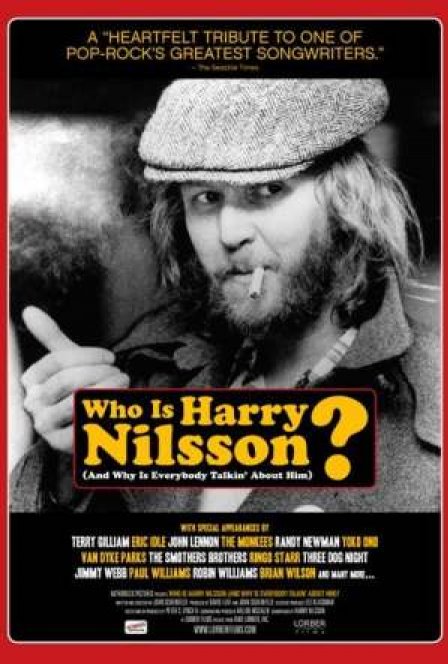It’s hard to imagine a Harry Nilsson fan who doesn’t think he’s underrated. A gifted songwriter best known for singing songs he didn’t write (“Everybody’s Talkin’,” “Without You”) and playing wild wingman to more than one Beatle, Nilsson showed no interest in shaping his work for either critics or pop audiences. Recording an orchestral album of pre-rock standards or a chipper breakup song hooked around the phrase “fuck you” may seem like canny commercial moves today, but either would have been commercial suicide in the early 70s, when Harry followed his breakthrough, Nilsson Schmilsson, with both. Indifferent to expectation and quickly destroying his gorgeous voice through hard living, Nilsson (who died in 1994) still hasn’t gotten his due; the Rock and Roll Hall Of Fame has ignored him for decades, and it’s taken four years for John Scheinfeld’s comprehensive documentary on the artist to be released in theaters.
Although he refused to perform concerts, Nilsson made several memorable TV appearances (including three bizarre BBC specials) and many of his famous friends (from Yoko Ono and Randy Newman to Robin Williams and Mickey Dolenz) were apparently happy to chat with Scheinfeld. Nilsson himself is frequently heard discussing his life in the film, his voice charismatic even when reduced to a hoarse slur. Unfortunately, Scheinfeld seems to have little idea of how to shape this mountain of material. We learn the singer was raised in extreme poverty, but we never find out how the poor boy eating dog food in Brooklyn learned how to write like Stephen Foster. We hear about his brutally heckling the Smothers Brothers with John Lennon, but we never get the payoff — that they apologized to the comedians with flowers and a note signed “Harry Nilsson and John Lennon - The Pussycats.” The talking heads mostly deliver banalities, and when we do get a concrete detail — “One” being inspired by a dial tone, the letter he wrote his infant son, how he seduced his third wife by showing up with a limo, flowers and melons — all the vague references to him being “wild” and “different” become even more disappointing.
Although it’s not a good sign if you want to check Wikipedia for more information during a movie rather than after, it does suggest the film succeeded in making its subject seem worthy of your attention. Despite the cavalcade of musicians, we never go long without hearing Nilsson sing in the film, and the effusive spirit of his music helps carry the film through its clunky chronological journey (which sadly excludes the recovery of his voice on the 1977 Knnillssonn album and his initial foray into cinema, Otto Preminger’s 1968 megaflop Skidoo). Despite its flaws, one can’t help but hope the film makes its way to heavy rotation on one of your better nostalgia networks. Who Is Harry Nilsson? deserves to be seen by music lovers, if only because Harry Nilsson does.

